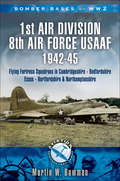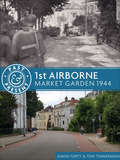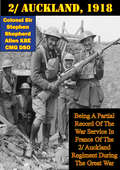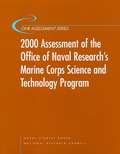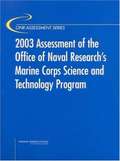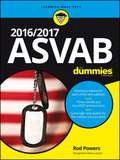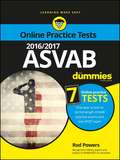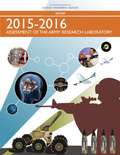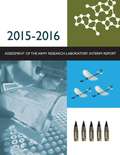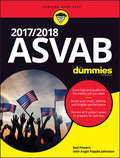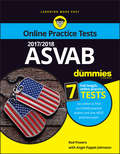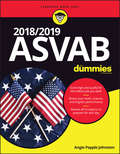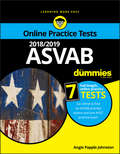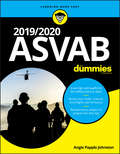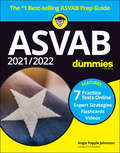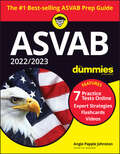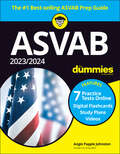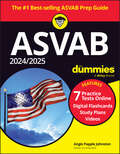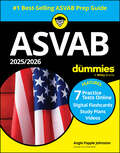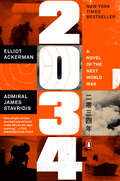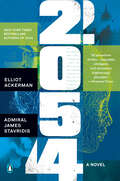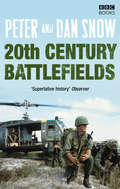- Table View
- List View
1st Air Division 8th Air Force USAAF 1942-45: Flying Fortress Squadrons in Cambridgeshire, Bedfordshire, Essex, Hertfordshire and Northamptonshire (Aviation Heritage Trail Ser.)
by Martin W. BowmanAs part of the AHT series, the airfields and interest in this book are concentrated in a particular area—in this case Cambridgeshire, Bedfordshire and Northamptonshire. Constituted as the lst Bombardment Division on 30 August 1943 the unit was activated at Brampton Grange, Huntingdon on 13 September 1943. It was assigned to the Eighth Air Force and redesignated lst Air Division in December 1944. The division served in combat in the European theater of Operations from September 1943 until April 1945. All squadrons within the division flew the long-distance Boeing B–17 Flying Fortress heavy bomber on raids into occupied Europe and Germany. There were forty-eight squadrons in the division based at Bassingbourn, Ridgewell, Nuthamstead, Podington, Chelveston, Thurleigh, Molesworth, Kimbolten, Grafton Underwood, Polebrook, Deenethorpe and Glatton.As part of the AHT series, the airfields and interest in this book are concentrated in a particular area—in this case Cambridgeshire, Bedfordshire and Northamptonshire. Constituted as the lst Bombardment Division on 30 August 1943 the unit was activated at Brampton Grange, Huntingdon on 13 September 1943. It was assigned to the Eighth Air Force and redesignated lst Air Division in December 1944. The division served in combat in the European theater of Operations from September 1943 until April 1945. All squadrons within the division flew the long-distance Boeing B–17 Flying Fortress heavy bomber on raids into occupied Europe and Germany. There were forty-eight squadrons in the division based at Bassingbourn, Ridgewell, Nuthamstead, Podington, Chelveston, Thurleigh, Molesworth, Kimbolten, Grafton Underwood, Polebrook, Deenethorpe and Glatton.
1st Airborne: Market Garden 1944 (Past & Present Series)
by Simon Forty Tom Timmermans<p>While the 6th Airborne Division had landed in France on D-Day and covered itself in glory, its counterpart, the 1st Airborne Division, had last seen action during an amphibious assault at Taranto on September 9, 1943, as part of the invasion of Italy. Returned to the UK in December 1943, it was held in reserve during the battle of Normandy and spent three months waiting for action, as plan after plan was proposed and then discarded, such was the speed of the Allied pursuit of the Germans. In September 1944, however, 1st Airborne played a leading role in Operation Market—the air component of Operation Market Garden, an audacious attempt by the Allies to bypass the Siegfried Line and advance into the Ruhr. It was to be 1st Airborne’s last action of the war. Encountering more resistance than expected, including II SS Panzer Corps, the division landed too far from Arnhem bridge, and fought bravely but in vain. Held up en route, particularly at Nijmegen, XXX Corps’ advance to Arnhem stuttered and ran late. After nine days of fighting, 1st Airborne had lost 8,000 men around Arnhem when the survivors retreated across the Lower Rhine to safety. During those nine days, however, they had created a legend: first as the small unit under Lt-Col John Frost held the “bridge too far” and then as the Oosterbeek perimeter came under sustained attack waiting for XXX Corps to arrive.<p> <p>The Past & Present Series reconstructs historical battles by using photography, juxtaposing modern views with those of the past together with concise explanatory text. It shows how much infrastructure has remained and how much such as outfits, uniforms, and ephemera has changed, providing a coherent link between now and then.<p>
2 Heroes in 1
by Suzanne BrockmannTroubleshooters: They Never Let You Down. The first and second addictive romantic suspense novels in New York Times bestselling author Suzanne Brockmann's Troubleshooters series, brought together in this special omnibus edition for the very first time. Twice the thrilling adventure, twice the excitement, twice the passion and 2 HEROES IN 1...In THE UNSUNG HERO, Navy SEAL Lieutenant Tom Paoletti catches a terrifying glimpse of an international terrorist in his hometown. The Navy dismisses the danger, but Tom's childhood sweetheart Kelly Ashton never doubts him. Creating his own makeshift counterterrorist team from his most loyal officers and the town's residents, Tom knows they must save the day if he is to have one last chance for happiness with Kelly...In THE DEFIANT HERO, Meg Moore is forced to take extreme action when her daughter and grandmother are kidnapped. When Navy SEAL Lieutenant John Nilsson is summoned to Washington, D.C., by the FBI, to help negotiate a hostage situation, the last person he expects to see holding a foreign ambassador at gunpoint is Meg. He hasn't seen her in years, but he's never forgotten her. John could lose his career if he helps her escape. She will lose her life if he doesn't...
2/ Auckland, 1918;: Being A Partial Record Of The War Service In France Of The 2/ Auckland Regiment During The Great War [Illustrated Edition]
by Colonel Sir Stephen Shepherd Allen KBE CMG DSOIncludes the First World War Illustrations Pack - 73 battle plans and diagrams and 198 photosColonel Sir Stephen Allen recounts, with justified pride the history of the 2nd Battalion of the Auckland Regiment, 2/Auckland for short, during the last year of the war. The 2nd Battalion formed part of the New Zealand Division and had seen much action since arriving in France in 1916; at the Battles of the Somme, Fleubaix, Messines and at Third Ypres. However the signal services of the 2/Auckland in 1918 are fully deserving of this separate tome; during the German Spring Offensives they were thrown into the line to stem the enemy advance and were the first troops to make a morale raising counterattack at La Signy Farm. As the German Army started to crack in the summer of 1918, 2/Auckland where among the foremost pursuers; at Welsh Ridge, Le Quesnoy.
2000 Assessment of the Office of Naval Research's Marine Corps Science and Technology Program
by National Research Council Naval Studies Board Commission on Physical Sciences, Mathematics, and Applications Division on Engineering and Physical Sciences Committee for the Review of ONR's Marine Corps Science and Technology ProgramThis review of the Science and Technology (S&T) program of the Office of Naval Research's (ONR's) Expeditionary Warfare Operations Technology Division, Code 353, comes at a time of considerable change in the Marine Corps and in ONR, which are currently in the midst of significant transitions. The Marine Corps is making plans to equip and train for engaging in a new style of warfare known as Operational Maneuver From the Sea (OMFTS) and for performing a wide variety of missions in urban settings, ranging from humanitarian assistance to combat and mixes of these suggested by the term three-block war. During 1999, ONR assumed management of that portion of the Marine Corps S&T program that had not been assigned several years earlier to the Marine Corps Warfighting Laboratory (MCWL). In 2002, control of most of ONR's advanced development funding (6.3), and of much of its exploratory development funding (6.2), will move from ONR's line divisions, of which Code 353 is one of many, to 12 new program offices, each dedicated to demonstrating technologies for future naval capabilities (FNCs). Given these changes, it is not surprising that some of the projects inherited recently by ONR, and assessed by the Committee for the Review of ONR's Marine Corps Science and Technology Program under the auspices of the Naval Studies Board of the National Research Council, differed from the customary ONR project and were more akin to preacquisition or acquisition support than to S&T. It is also not surprising that Code 353 could not articulate its plans for future investments clearly and concisely, given the current uncertainty about the content of and funding level for FNCs. The Marine Corps S&T program supports the five imperatives for technology advancement that the Marine Corps Combat Development Command (MCCDC) has identified as prerequisites for the transition to OMFTS: maneuver, firepower, logistics, training and education, and command and control. The committee supports investment in these areas and, in the report's discussions and recommendations, follows the five imperatives.
2003 Assessment of the Office of Naval Research's Marine Corps Science and Technology Program
by Committee for the Review of ONR's Marine Corps Science Technology ProgramThe Office of Naval Research (ONR) funds research across a broad range of scientific and engineering disciplines in support of the Navy and Marine Corps. To ensure that its investments are serving those ends and are of high quality, ONR requires each of its departments to undergo annual review. Since 1999, the Naval Expeditionary Warfare Department of ONR has requested that the NRC conduct these reviews. This report presents the results of the second review of the Marine Corps Science and Technology program. The first review was conducted in 2000. The 2003 assessment examines the overall Marine Corps S&T program, the littoral combat future naval capability, the core thrusts of the program, and basic research activities.
2013-2014 Assessment of the Army Research Laboratory: Interim Report
by Army Research Laboratory Technical Assessment BoardThe National Research Council's Army Research Laboratory Technical Assessment Board provides biennial assessments of the scientific and technical quality of the research, development, and analysis programs at the Army Research Laboratory, focusing on ballistics sciences, human sciences, information sciences, materials sciences, and mechanical sciences. This interim report summarizes the findings of the Board for the first year of this biennial assessment. During the first year the Board examined the following elements: within ballistic sciences, terminal ballistics; within human sciences, translational neuroscience and soldier simulation and training technology; within information sciences, autonomous systems; and within materials sciences, energy materials and devices, photonic materials and devices, and biomaterials. The review of autonomous systems included examination of the mechanical sciences competency area for autonomous systems. A second, final report will subsume the findings of this interim report and add the findings from the second year of the review, during which the Board will examine additional elements.
2015 / 2016 ASVAB For Dummies
by Rod Powersand your aptitude for each specialty. The higher your score, the broader your options. This book gives you everything you need to brush up, practice, and bring weak areas up to speed so you can face test day with confidence.Build vocabulary, reading comprehension, and math skillsGet in-depth understanding of each of the nine subtestsLearn proven study strategies and test-taking tacticsTest your knowledge with full-length practice examsOver one million people take the ASVAB every year, and you're competing with them all -- the exam is scored on a percentile basis, so your standing is relative to everyone else's. A high score makes you eligible for a wider range of occupations and Enlistment Bonuses, so it behooves you to study early and often. ASVAB For Dummies gives you the tools and information you need to score the military future of your dreams.
2015 / 2016 ASVAB For Dummies with Online Practice
by Rod PowersAce the ASVAB with this comprehensive, easy-to-use guide Expanded and improved, 2015/2016 ASVAB For Dummies with Online Practice offers everything you'll need to hone your skills before taking the big test. In this easy-to-use, complete guide, expert Rod Powers - a retired First Sergeant from the U.S. Air Force - covers the Armed Services Vocational Aptitude Battery like no one else can. The book offers in-depth reviews of all nine test subjects, along with complete explanations for every question. To give you the opportunity to sharpen your test-taking skills, the guide also offers exercises and tips that will help you pinpoint the areas where you need the most help. To make sure you're as prepared as can be, access to practice tools online takes things one step further, featuring over one thousand questions that allow you to create your own optimized exams so you'll be ready on test day. Offers comprehensive preparation with six full-length ASVAB practice tests that will sharpen your test-taking skills Provides two AFQT practice tests to assess enlistment eligibility Gives you the ability to create your own tests for practice where you really need it, along with feedback on your progress Offers 300 flashcards to improve your vocabulary Jump in to 2015/2016 ASVAB For Dummies and take your military test-taking skills to the next level.
2015-2016 Assessment of the Army Research Laboratory
by Engineering Medicine National Academies of SciencesThe National Academies of Sciences, Engineering, and Medicine’s Army Research Laboratory Technical Assessment Board (ARLTAB) provides biennial assessments of the scientific and technical quality of the research, development, and analysis programs at the Army Research Laboratory (ARL), focusing on ballistics sciences, human sciences, information sciences, materials sciences, and mechanical sciences. This biennial report summarizes the findings of the ARLTAB from the reviews conducted by the panels in 2015 and 2016 and subsumes the 2015-2016 interim report.
2015-2016 Assessment of the Army Research Laboratory: Interim Report
by Engineering Medicine National Academies of SciencesThe National Academies of Sciences, Engineering, and Medicine's Army Research Laboratory Technical Assessment Board (ARLTAB) provides biennial assessments of the scientific and technical quality of the research, development, and analysis programs at the Army Research Laboratory (ARL), focusing on ballistics sciences, human sciences, information sciences, materials sciences, and mechanical sciences. This interim report summarizes the findings of the Board for the first year of this biennial assessment; the current report addresses approximately half the portfolio for each campaign; the remainder will be assessed in 2016. During the first year the Board examined the following elements within the ARL's science and technology campaigns: biological and bioinspired materials, energy and power materials, and engineered photonics materials; battlefield injury mechanisms, directed energy, and armor and adaptive protection; sensing and effecting, and system intelligence and intelligent systems; advanced computing architectures, computing sciences, data-intensive sciences, and predictive simulation sciences; human-machine interaction, intelligence and control, and perception; humans in multiagent systems, real-world behavior, and toward human variability; and mission capability of systems. A second, final report will subsume the findings of this interim report and add the findings from the second year of the review.
2017 / 2018 ASVAB For Dummies
by Rod Powers Angie Papple JohnstonThe bestselling enlistment test-prep—newly expanded and improved! Wanna join the military? Your first step is to take the ASVAB—the Armed Services Vocational Aptitude Battery. Your score on this important test helps determine your military career, so if you have a specific job in mind, you need the right score to make that happen. 2017/2018 ASVAB For Dummies offers an in-depth view of each of the ASVAB's nine subtests with plenty of practice questions, exercises, and strategies for boosting performance and scores in key areas. You'll benefit from proven study tips to help you pinpoint your strengths and weaknesses and hone your test-taking skills. 2017/2018 ASVAB For Dummies is your key to preparing to take the ASVAB and getting the score you need to get the job you want. Overviews and practice questions for all 9 subtests Six full ASVAB practice tests to perfect test-taking skills One AFQT practice test to assess enlistment eligibility 2017/2018 ASVAB For Dummies is a must-have book that provides you with the integral tools and information you need in order to score the military future of your dreams!
2017-2018 Assessment of the Army Research Laboratory: Interim Report
by Engineering Medicine National Academies of SciencesThe Army Research Laboratory (ARL) is the corporate laboratory for the U.S. army, which bridges scientific and military communities. The ARL is critical in maintaining the United States’ dominant military power through its advanced research and analysis capabilities. The National Academies of Sciences, Engineering, and Medicine's Army Research Laboratory Technical Assessment Board (ARLTAB) conducts biennial assessments of the scientific and technical quality of the facilities. These assessments are necessary to ensure that the ARL’s resources and quality of programs are maximized. 2017-2018 Assessment of the Army Research Laboratory includes findings and recommendations regarding the quality of the ARL’s research, development, and analysis programs. The report of the assessment is subdivided by the ARL’s Science and Technology campaigns, including Materials Research, Sciences for Lethality and Protection, Information Sciences, Computational Sciences, Sciences for Maneuver, Human Sciences, and Analysis and Assessment. This biennial report summarizes the findings for the 2017-2018 period.
2017/2018 ASVAB For Dummies with Online Practice
by Rod PowersThe bestselling ASVAB study guide—now updated for 2017/2018 If you're prepping for the ASVAB in order to begin or advance your military career, you know how important it is to succeed. Inside this bestselling study guide, you get in-depth reviews of all nine test subjects you'll encounter on the ASVAB, foolproof strategies for making sense of the verbal, math, and general components, and expert tips and tricks to help you discover the areas where you need the most help. Plus, you get a one-year subscription to the online prep companion, where you can study whenever you want, take full-length practice exams, and create customized practice sets in the subjects you need to study the most. If you want to put your military career on the fast track to success, ASVAB For Dummies is your first stop. Whether you need to boost your math skills, improve your English, or take your understanding of science to new heights, this guide offers all the study tools you need to show up on exam day prepared to score your very best! Take six ASVAB practice exams to sharpen your test-taking skills Take advantage of one AFQT practice test to assess your enlistment eligibility Use 500 flashcards to improve your vocabulary Boost your test-taking strategies for exam day Get the score you need to get the job you want!
2018 / 2019 ASVAB For Dummies
by Angie Papple JohnstonThe bestselling ASVAB study guide—now updated for 2018/2019! The ASVAB (Armed Services Vocational Aptitude Battery) is a timed multi-aptitude test developed and maintained by the Department of Defense. The test is given at more than 13,000 schools and Military Entrance Processing Stations nationwide and is used to determine the branch of service and career field where a candidate would most excel. If you’re one of the more than one million people a year preparing to take the test, this is your one-stop resource to ensure you perform your very best. 2018/2019 ASVAB For Dummies is packed with practice questions; an in-depth view of each of the nine subtests; strategy cheat sheets; proven study tips and test taking-tactics, as well as 3 full-length practice tests and 2 AFQT practice tests to help you prep for test day. Score high and qualify for the military job you want Boost your math, science, and English performance Review all 9 subject areas covered on the test Find out how the test is scored and know what to expect on exam day Scoring high on the ASVAB will require study and concentration. 2018/2019 ASVAB For Dummies gives you the tools and information you need to land the military future of your dreams.
2018/2019 ASVAB For Dummies with Online Practice
by Angie Papple JohnstonAce the ASVAB with this easy to use guide—including online practice! Looking to join the military and get the job of your dreams? Before your boots hit the ground, you’ll have to perform on the ASVAB to qualify for military participation and for specialty placement. 2018/2019 ASVAB For Dummies with Online Practice provides you with in-depth reviews of the nine test subjects to get you going, along with complete explanations for each question, exercises, strategy cheat sheets, and tips to discover your weaknesses and work to maximize your test performance. You’ll also be able to go online to study whenever you like, with convenient resources, hundreds of flashcards, 6 full-length ASVAB practice tests, and one AFQT practice test that will help you tailor your studying to suit your specific needs. If you’ve always dreamed of joining the military and being challenged by a new and exciting career, the ASVAB is your first step to achieving your dreams, and this guide will help you along the way! Aim high, score high on the ASVAB and qualify for the military job you want Quickly boost your math, science, and English performance for the test Complete an in-depth review of all 9 subject areas to prepare for that crucial test day Study hard and get the score that will help you get an enlistment bonus 2018/2019 ASVAB For Dummies with Online Practice is your go-to guide for mastering the skills and knowledge you’ll need to attain the ASVAB test score that will help you live your dream!
2019/2020 ASVAB For Dummies
by Angie Papple JohnstonThe bestselling ASVAB study guide—now updated and improved for 2019/2020! More than 1 million students and potential recruits take the ASVAB every year, including 400,000 recruits and 900,000 high school students. Since the test was first introduced in 1968, more than 40 million people have taken the exam. 2019/2020 ASVAB For Dummies is packed with practice questions, an in-depth review of each of the nine subtests, strategy cheat sheets, proven study tips, and so much more. New for this edition, potential recruits will find expanded math coverage, with more content review and practice questions for the Math Knowledge and Arithmetic Reasoning sections of the exam. Score high and qualify for the military job you want Boost your math, science, and English performance Review all nine subject areas to prepare for test day Take three full-length ASVAB practice tests and two AFQT practice tests If you’re preparing for this all-important exam, this hands-on study guide makes it easier than ever to take your military career to new heights.
2021 / 2022 ASVAB For Dummies: Book + 7 Practice Tests Online + Flashcards + Video
by Angie Papple JohnstonOwn the ASVAB test with the #1 guide on the market! Passing the ASVAB test is the essential ticket to getting into your dream branch of the military—and a good score can determine the shape of your career. A stellar performance can also help you get grants and bonuses for school, so—no pressure! But don't be daunted: like any military operation, having the right plan of attack and equipment are key—and as the number-one-selling guide year after year that's packed with all the information you need to win, the latest edition ASVAB For Dummies takes care of both of these in one! In a friendly, straightforward style, Angie Papple Johnston—who passed the test herself in 2006 to join the Army—provides in-depth reviews of all nine test subjects. Don't worry if you slept through some of this material in school; you’ll find a complete refresher on everything you'll be expected to know—plus full explanations for every answer, drill exercises, and strategy cheat sheets for verbal, math, and general sciences. You'll also get tips on how to pinpoint areas where you need to develop mental muscle and to strengthen your test-taking skills. And if this weren't already giving you some pretty awesome firepower, you can also go online to reinforce your game using flashcards and customizable practice tests calibrated to address areas where you need help the most. Match your skills against practice problems Drill your math, science, and English knowledge to perfection Master test strategy and tactics Get one-year access to additional practice tests, flashcards, and videos online Whatever your aim for your military career, this book provides the perfect training ground for you to be the very best you can be on the day of the test!
2022 / 2023 ASVAB For Dummies: Book + 7 Practice Tests Online + Flashcards + Video
by Angie Papple JohnstonLock down the score you need to get the job you want! The bestselling ASVAB For Dummies is back with an updated and expanded annual edition. Joining the military? Want to maximize your score and your job flexibility? Dummies to the rescue! With 2022/2023 ASVAB For Dummies, you’ve got access to an insane amount of test prep and study material, including 7 online practice tests, flashcards, hundreds of practice questions right in the book, and a lot more. Military recruiters trust the #1 Bestselling ASVAB study guide on the market to help their prospective enlistees score high on the test. Check out these insider tips and tricks for test-day-success from an expert author, and practice with example problems until you feel confident. Learn at your own pace. It’s all possible. Next stop: basic training. Learn what the ASVAB is all about, including all 10 test sections Practice with 7 online practice tests and countless more questions Identify the score you need to get the job you want—then get that score Work through at your own pace and emphasize the areas you need ASVAB For Dummies is a reliable study guide with proven results. You don’t need anything else. Get studying, recruit!
2023 / 2024 ASVAB For Dummies (+ 7 Practice Tests, Flashcards, & Videos Online)
by Angie Papple JohnstonMaximize your ASVAB score and maximize your military job flexibility If you want to join the military, you have to take the ASVAB. And if you want the flexibility to apply for a specific job, you’ll need right the score to get it! The 2023/2024 edition of ASVAB For Dummies has everything you need to prep for the exam and get the score you need to land the job you want: content review, study questions, practice exams in the book and online, digital flashcards, instructional videos, and practical tips for exam day. This bestselling ASVAB study guide is back, with everything you need to know about this year’s test, plus customizable test prep plans so you can make your study time count, right up to ASVAB day. Brush up on all 10 subject areas, including science, arithmetic, and electronics. Then, look to the easy-to-use online resources in this to activate your knowledge and launch your military career. Access hundreds of practice questions, full-length practice tests, instructional videos, and digital flashcards online Create a study schedule that works for you, and maximize your ASVAB score Show the military that you’re capable and ready to get started in your dream job Learn at your own pace and get tips for keeping your nerves in check on test dayIf you’re taking the ASVAB this year – or this week -- you need this reliable Dummies study guide—it brings results.
2024/2025 ASVAB For Dummies: Book + 7 Practice Tests + Flashcards + Videos Online
by Angie Papple JohnstonGet the score you need to get the job you want! The bestselling ASVAB For Dummies is back with an updated and expanded annual edition. This trusted study guide will help you succeed on the essential military recruitment test. Now with more examples, walk-throughs, and practice questions, you can land the score that will qualify you for your preferred military job. With practice tests in the book and online, videos, and hundreds of digital flashcards, this Dummies resource is perfect for all things ASVAB. Trusted by military recruiters across the country, this book also includes insider tips and tricks for test-day-success. Study at your own pace and make your dreams possible with ASVAB For Dummies. Learn from simple explanations of all the content covered on the ASVAB, plus tons of resources for studying Follow detailed study plans that will help you prepare 12 weeks, 6 weeks, 4 weeks, or 1 week before the test Take practice tests and work through detailed answer explanations to improve your score Get even more practice online, with practice tests, flashcards, and videos For years, ASVAB For Dummies has been helping recruits launch their military careers right. Now, it's your turn.
2025/2026 ASVAB For Dummies: Book + 7 Practice Tests, Flashcards, and Videos Online
by Angie Papple JohnstonScore high on the ASVAB and launch your military career! The latest edition of ASVAB For Dummies is here, packed with content to guide you through the military's aptitude test in 2025/2026. Whether you're aiming for a top-tier job or just need to secure that qualifying score, this book's got you covered. With expanded content on paragraph comprehension and more science practice questions than ever before, this test prep guide will help you do your best on test day. Plus, you'll get full access to online practice tests, digital flashcards, and videos to boost your confidence. Recommended by recruiters nationwide, ASVAB For Dummies shares insider strategies to help you excel when it counts. Clear, straightforward explanations of every ASVAB section, with plenty of tools to help you study smarter New information on Space Force career paths Full-length practice tests with detailed answers, so you can learn from your mistakes and raise your score Instructional videos, hundreds of practice questions, and digital flashcards online ASVAB For Dummies has been the go-to resource for military hopefuls for years—now it's your chance to get ahead!
2034: A Novel of the Next World War
by Elliot Ackerman Admiral James StavridisFrom two former military officers and award-winning authors, a chillingly authentic geopolitical thriller that imagines a naval clash between the US and China in the South China Sea in 2034--and the path from there to a nightmarish global conflagration. <P><P>On March 12, 2034, US Navy Commodore Sarah Hunt is on the bridge of her flagship, the guided missile destroyer USS John Paul Jones, conducting a routine freedom of navigation patrol in the South China Sea when her ship detects an unflagged trawler in clear distress, smoke billowing from its bridge. On that same day, US Marine aviator Major Chris "Wedge" Mitchell is flying an F35E Lightning over the Strait of Hormuz, testing a new stealth technology as he flirts with Iranian airspace. By the end of that day, Wedge will be an Iranian prisoner, and Sarah Hunt's destroyer will lie at the bottom of the sea, sunk by the Chinese Navy. Iran and China have clearly coordinated their moves, which involve the use of powerful new forms of cyber weaponry that render US ships and planes defenseless. In a single day, America's faith in its military's strategic pre-eminence is in tatters. A new, terrifying era is at hand. <P><P>So begins a disturbingly plausible work of speculative fiction, co-authored by an award-winning novelist and decorated Marine veteran and the former commander of NATO, a legendary admiral who has spent much of his career strategically outmaneuvering America's most tenacious adversaries. Written with a powerful blend of geopolitical sophistication and human empathy, 2034 takes us inside the minds of a global cast of characters--Americans, Chinese, Iranians, Russians, Indians--as a series of arrogant miscalculations on all sides leads the world into an intensifying international storm. In the end, China and the United States will have paid a staggering cost, one that forever alters the global balance of power. Everything in 2034 is an imaginative extrapolation from present-day facts on the ground combined with the authors' years working at the highest and most classified levels of national security. Sometimes it takes a brilliant work of fiction to illuminate the most dire of warnings: 2034 is all too close at hand, and this cautionary tale presents the reader a dark yet possible future that we must do all we can to avoid. <P><P><b>A New York Times Bestseller</b>
2054: A Novel
by Elliot Ackerman Admiral James StavridisFrom the acclaimed authors of the runaway New York Times bestseller 2034 comes another explosive work of speculative fiction set twenty years further in the future, at a moment when a radical leap forward in artificial intelligence combines with America&’s violent partisan divide to create an existential threat to the country, and the worldIt is twenty years after the catastrophic war between the United States and China that brought down the old American political order. A new party has emerged in the US, one that&’s held power for over a decade. Efforts to cement its grip have resulted in mounting violent resistance. The American president has control of the media, but he is beginning to lose control of the streets. Many fear he&’ll stop at nothing to remain in the White House. Suddenly, he collapses in the middle of an address to the nation. After an initial flurry of misinformation, the administration reluctantly announces his death. A cover-up ensues, conspiracy theories abound, and the country descends into a new type of civil war.A handful of elite actors from the worlds of computer science, intelligence, and business have a fairly good idea what happened. All signs point to a profound breakthrough in AI, of which the remote assassination of an American president is hardly the most game-changing ramification. The trail leads to an outpost in the Amazon rainforest, the last known whereabouts of the tech visionary who predicted this breakthrough. As some of the world&’s great powers, old and new, state and nonstate alike, struggle to outmaneuver one another in this new Great Game of scientific discovery, the outcome becomes entangled with the fate of American democracy.Combining a deep understanding of AI, biotech, and the possibility of a coming Singularity, along with their signature geopolitical sophistication, Elliot Ackerman and Admiral James Stavridis have once again written a visionary work. 2054 is a novel that reads like a thriller even as it demands that we consider the trajectory of our society and its potentially calamitous destination.
20th Century Battlefields
by Dan Snow Peter SnowIn this riveting book, political journalist Peter Snow and military historian Dan Snow bring to life the most intense and bitterly fought battles of the 20th century - from the apocalyptic terrain of the Western Front to the desert landscape of Iraq. Punctuated by powerful eyewitness testimony, their compelling and often shocking narrative highlights the strategy of military commanders as well as the experience of men on the frontline. 20th Century Battlefields looks back at the most violent century in history and examines the challenges facing armed forces in the future.
